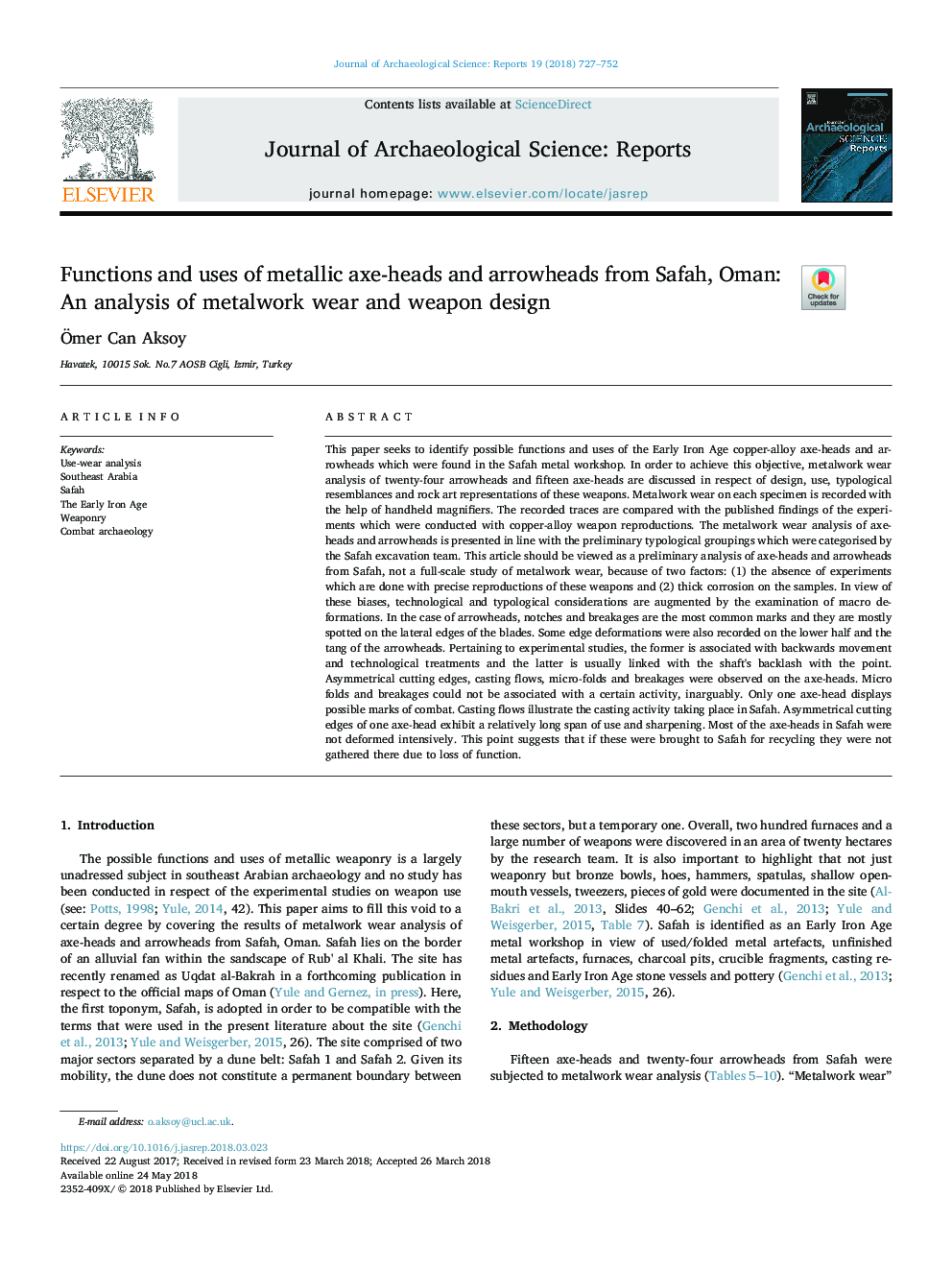| کد مقاله | کد نشریه | سال انتشار | مقاله انگلیسی | نسخه تمام متن |
|---|---|---|---|---|
| 7444972 | 1483924 | 2018 | 26 صفحه PDF | دانلود رایگان |
عنوان انگلیسی مقاله ISI
Functions and uses of metallic axe-heads and arrowheads from Safah, Oman: An analysis of metalwork wear and weapon design
دانلود مقاله + سفارش ترجمه
دانلود مقاله ISI انگلیسی
رایگان برای ایرانیان
موضوعات مرتبط
علوم انسانی و اجتماعی
علوم انسانی و هنر
تاریخ
پیش نمایش صفحه اول مقاله

چکیده انگلیسی
This paper seeks to identify possible functions and uses of the Early Iron Age copper-alloy axe-heads and arrowheads which were found in the Safah metal workshop. In order to achieve this objective, metalwork wear analysis of twenty-four arrowheads and fifteen axe-heads are discussed in respect of design, use, typological resemblances and rock art representations of these weapons. Metalwork wear on each specimen is recorded with the help of handheld magnifiers. The recorded traces are compared with the published findings of the experiments which were conducted with copper-alloy weapon reproductions. The metalwork wear analysis of axe-heads and arrowheads is presented in line with the preliminary typological groupings which were categorised by the Safah excavation team. This article should be viewed as a preliminary analysis of axe-heads and arrowheads from Safah, not a full-scale study of metalwork wear, because of two factors: (1) the absence of experiments which are done with precise reproductions of these weapons and (2) thick corrosion on the samples. In view of these biases, technological and typological considerations are augmented by the examination of macro deformations. In the case of arrowheads, notches and breakages are the most common marks and they are mostly spotted on the lateral edges of the blades. Some edge deformations were also recorded on the lower half and the tang of the arrowheads. Pertaining to experimental studies, the former is associated with backwards movement and technological treatments and the latter is usually linked with the shaft's backlash with the point. Asymmetrical cutting edges, casting flows, micro-folds and breakages were observed on the axe-heads. Micro folds and breakages could not be associated with a certain activity, inarguably. Only one axe-head displays possible marks of combat. Casting flows illustrate the casting activity taking place in Safah. Asymmetrical cutting edges of one axe-head exhibit a relatively long span of use and sharpening. Most of the axe-heads in Safah were not deformed intensively. This point suggests that if these were brought to Safah for recycling they were not gathered there due to loss of function.
ناشر
Database: Elsevier - ScienceDirect (ساینس دایرکت)
Journal: Journal of Archaeological Science: Reports - Volume 19, June 2018, Pages 727-752
Journal: Journal of Archaeological Science: Reports - Volume 19, June 2018, Pages 727-752
نویسندگان
Ãmer Can Aksoy,